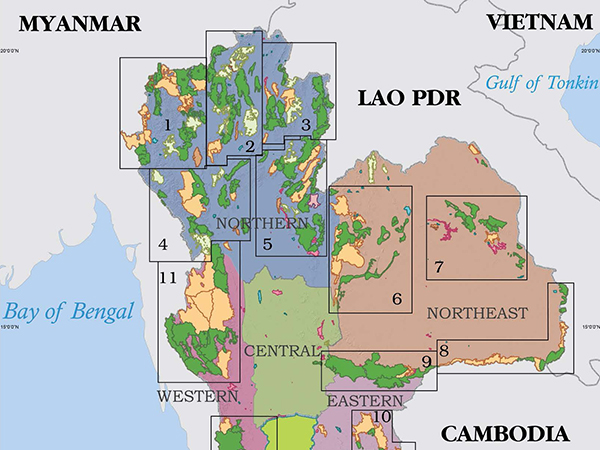Protected area complexes: a new approach to connectivity in Thailand
DOI:
https://doi.org/10.20531/tfb.2018.46.1.04Keywords:
Biodiversity, climate change, conservation corridors, ecological functions, elephants, forest, protected area complexes, Thailand, tigers, trees.Abstract
A well-known principle of conservation biology is that larger areas can support larger wildlife populations and thereby reduce the risk of extinction. To be effective in conserving rare species, protected areas need to be sufficiently large to include at least a minimum viable population, though few, if any, are large enough to support all of the species they intend to help conserve. To address this concern, Thailand has become a leader in establishing complexes of protected areas and surrounding lands, designed to facilitate their planning and management on an ecosystem basis. The 20 protected area complexes established in Thailand to date cover both terrestrial and marine protected areas, in virtually all parts of the country. They potentially can connect protected areas through conservation corridors that include privately owned land or land managed by other government agencies (such as Forestry, Fisheries, and Military) to connect protected areas, thereby expanding their effective size. These corridors enable the movement of plants and animals between protected areas, as well as physically linking the habitats. Protected area complexes provide opportunities for adapting to climate change and enable closer collaboration between protected areas and local communities, thereby supporting rural development.
Downloads



